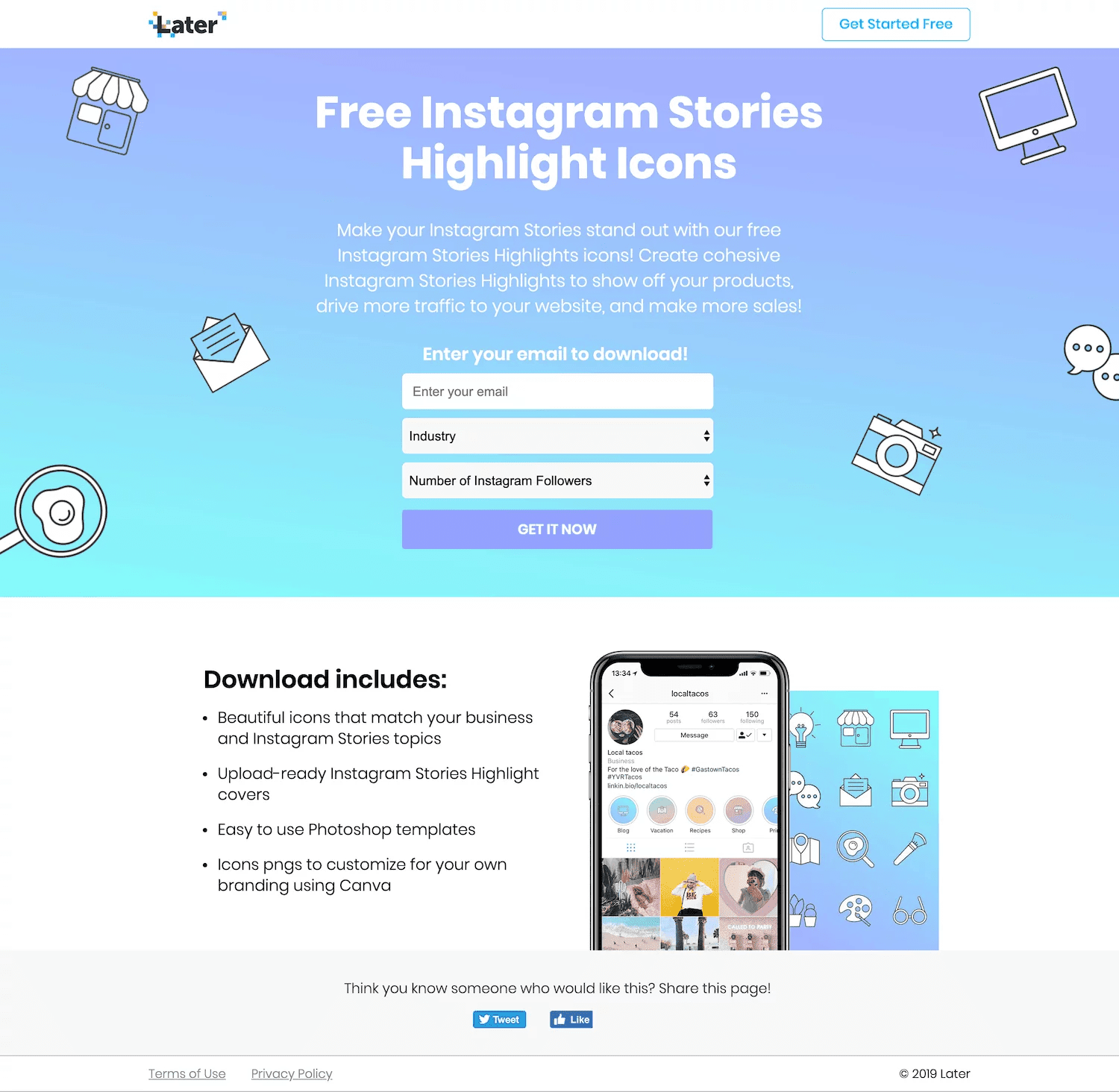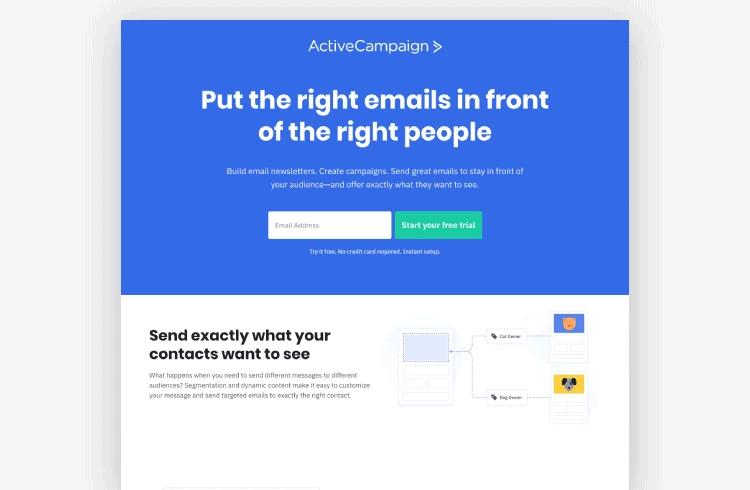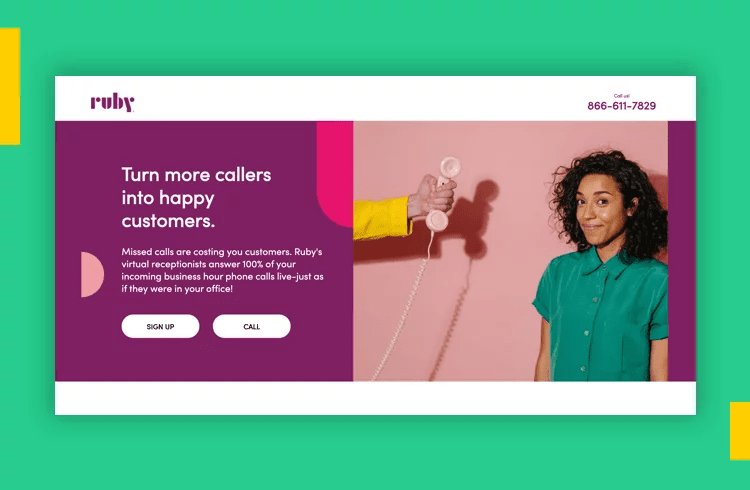We all impulse shop online every now and then, but the truth is, most customers aren’t ready to commit the moment they first see your brand.
For the typical consumer, a purchase comes after a series of moments, choices, inquiries, and experiences that slowly bring us closer and closer to a buying decision. We think about it. We shop around. We read reviews. We ask our friends. We think some more.
That’s why we call it “the buyer’s journey.” And like most journeys, it usually takes a little while to get to the destination.
When you understand this journey and know where your consumers are within it, you can serve up customized content and landing pages optimized for each phase of the decision-making process.
The Buyer’s Journey and Your Marketing Strategy
The buyer’s journey is a framework that presents the stages a customer goes through as they decide to buy something.
Since someone’s stage in the buyer’s journey affects how they understand marketing, the buyer’s journey impacts copy, audience targeting, content, and campaign strategy.
In the marketing world, this concept means that you can’t use a “one piece of content fits all” strategy. Everyone has different intentions when they see your content, and they’ll have different reactions too.
(Okay, quick side note—the buyer’s journey is separate from the customer journey you’ve seen on the Unbounce blog. Every business has a unique customer journey map. But the buyer’s journey is a universal concept that you can apply to anyone’s audience.)
Stages of the Buyer’s Journey
While it’s possible to break the buyer’s journey into five or more steps, we’re going to focus on the big three: awareness, consideration, and decision. These stages are straightforward so anyone can begin to understand their audience’s buying process.
1. Awareness: Customer, Meet Brand
People in the awareness stage are unaware of your product. They might know they have a problem to solve, but not that you’re there to help. During this stage, it’s your job to let them know you exist.
At this step in the buyer’s journey, informative content works better than promotional content. Think of it this way: Imagine a dating prospect proposing marriage or asking to meet your parents before you’ve even had your first date? I mean… Yikes. Don’t do the same thing to these prospects.
Since these prospects don’t even know who you are yet, they’ll prefer content that presents you as a new option instead of forcing an aggressive sales pitch on them. The best landing page content for folks in the awareness stage educates them about the brand and offers something of value that addresses their needs.
Sometimes, landing pages at the awareness stage are gated or combined with a lead magnet, which offers something in exchange for the visitor’s email. When you capture the contact information of these newly aware potential buyers, you can continue your conversation with them through the subsequent stages. (It’s kind of like asking for their number so you can schedule another date.)

Later brought in tons of leads using a gated landing page they made in Unbounce. Customers entered their emails in exchange for free icons. Thanks to this landing page, Later can get in touch with them to keep them thinking about the platform.
Unbounce has tons of lead generation templates that allow you to make one of these landing pages in a jiffy. And they work—Later sees an average conversion rate of 57% on this example page.
2. Consideration: Getting to Know You
In the consideration stage of the buyer’s journey, the customer knows your brand and the problem they need to solve. But, they also know about other brands that could solve that same problem. They’re weighing the available options and need to hear why they should choose you.
Content in the consideration stage offers more product details than content in the awareness stage. These folks want to know what they’re buying and now’s your chance to tell them. This is the stage where you might talk about features and benefits, compare yourself with competitors, and share what makes you different.
Now, keep in mind, you still don’t want to go fully promotional at this point. Customers in the consideration stage aren’t making a decision yet. Instead, they’re collecting information that they’ll use in the next stage. As IMPACT puts it, you’ve gotta focus on the solution you provide.
Need an example? Take a look at this ActiveCampaign landing page from the Unbounce list of best B2B landing pages.

On this landing page, ActiveCampaign showcases its personalization and segmentation features. It accomplishes two goals:
- Educate visitors about ActiveCampaign’s features
- Push ActiveCampaign’s main selling points
The ActiveCampaign team chose the platform’s most distinct features in this case. With this approach, the page starts to set the software apart from the competition without getting too aggressive. If you peep the full landing page at the link, you’ll also see some social proof that establishes ActiveCampaign as a contender.
If you’re still figuring out which of your product features will catch potential buyers’ eye best, try testing landing page variants that highlight separate features and compare their conversion performance.
3. Decision: Going in for the Conversion
You’ve got your prospect’s attention in the awareness stage and kept yourself in contention during the consideration stages. Next is the grand finale: the decision stage.
Just because you’ve gotten this far doesn’t mean you can phone it in from here on out. The deal’s not sealed yet. After all, 81% of web users have left an online conversion form before finishing it.
Snagging that conversion will take all you’ve got. Content for the conversion stage doesn’t shy away from promoting its product. Now’s the time to give that sales pitch and flaunt those results.
Sales pages are landing pages designed specifically for this step in the buyer’s journey. They lead the visitor to conversion with compelling copy and visuals.

The reception service Ruby uses full-on sales copy for the headline and supporting copy on this sales page. It’s all about the benefits, baby.
Landing pages for the decision stage should be hyper-focused on conversions, meaning the calls to action here are designed to get folks over the finish line. They include buy, sign up, call, schedule, add to cart, and other clear requests for conversion.
Unbounce tracks conversions and works with Google Analytics to give you detailed stats on your page’s performance. With so much data at your fingertips, you’ll be able to catch which pages are grabbing those conversions.
It’s All About Playing the Long Game
A marketing campaign focused on the buyer’s journey requires a time investment. Your customers might not buy now, but that doesn’t mean they won’t in the future. You’ve just gotta keep customizing your landing page content to match your audience’s experience. Always think of the stages of the buyer’s journey as you plan, create, and execute your marketing projects. You’ll see a difference in conversions as you keep at it.

![[Unbounce – TOFU] Conversion Benchmark Report – V1](https://unbounce.com/photos/BLOG-CTA-OPTION-1-scaled.jpg)
